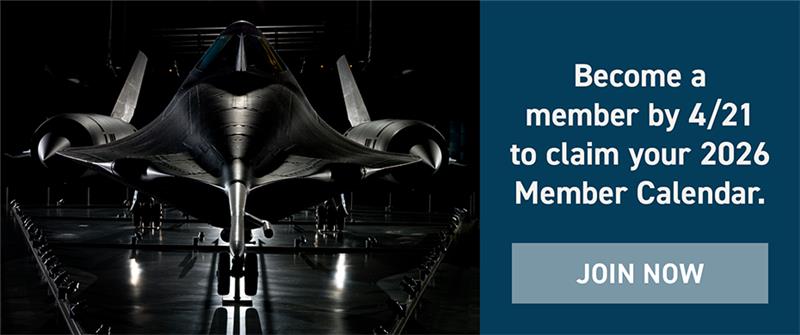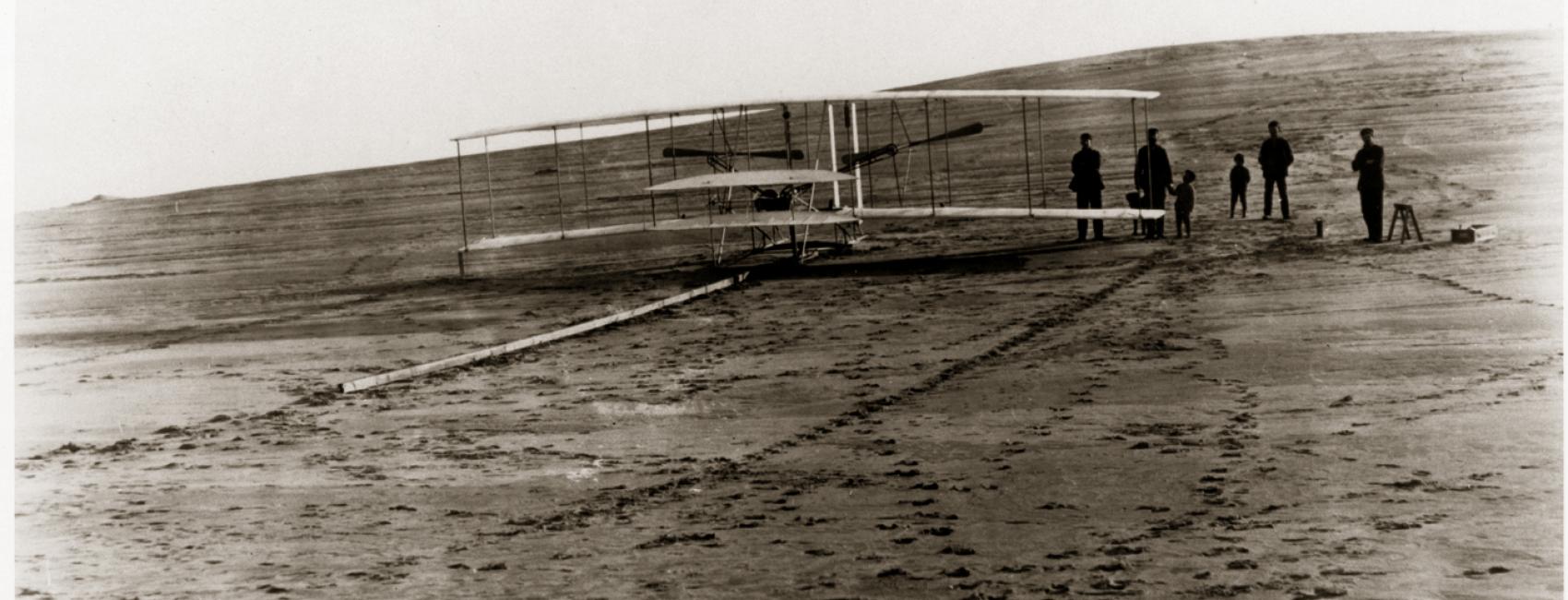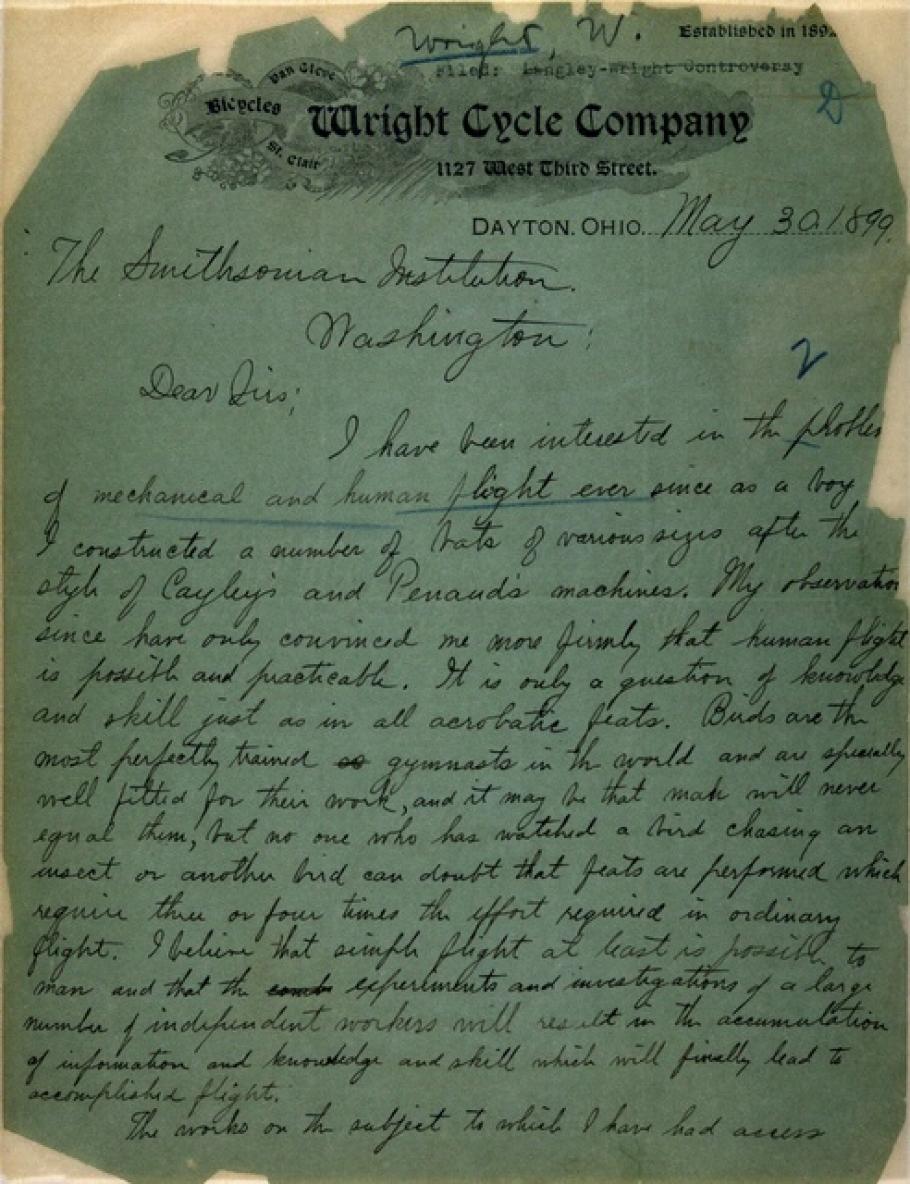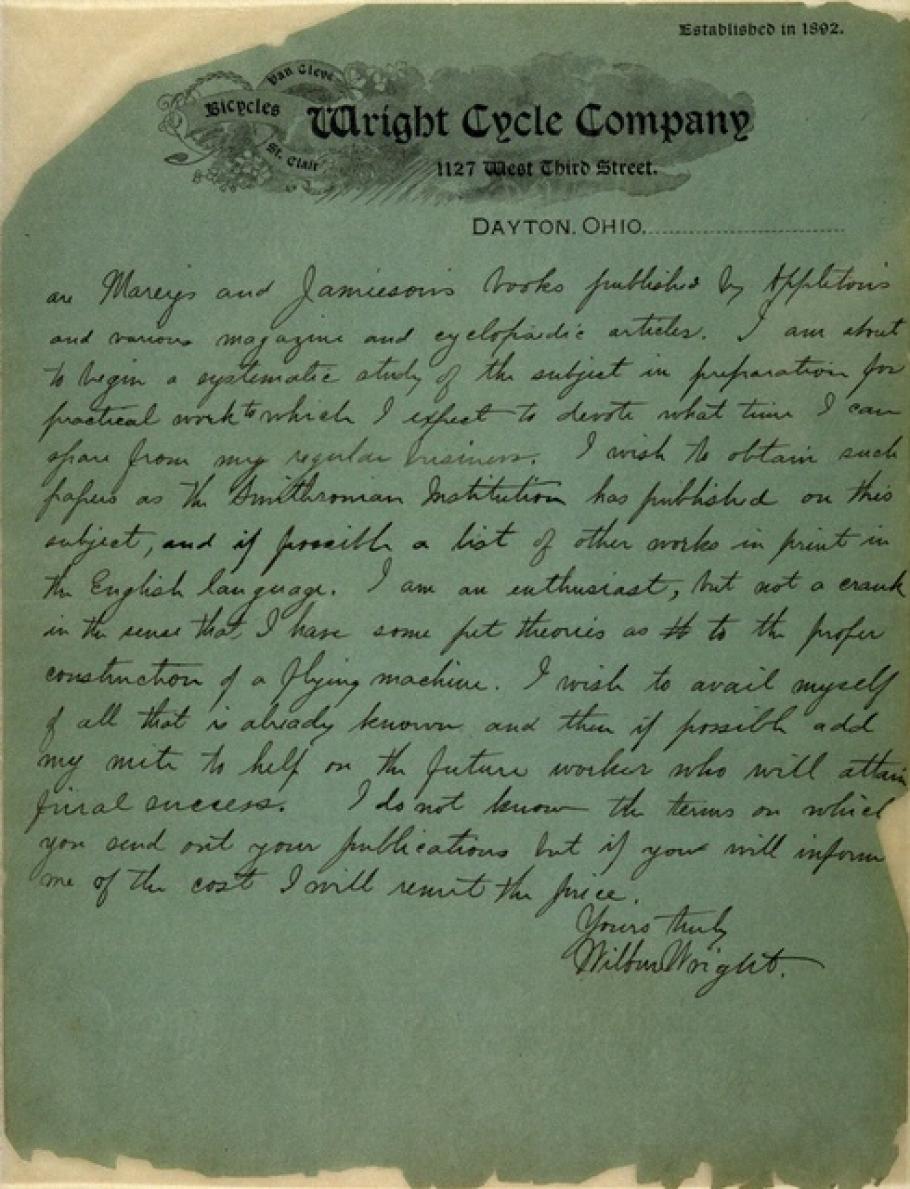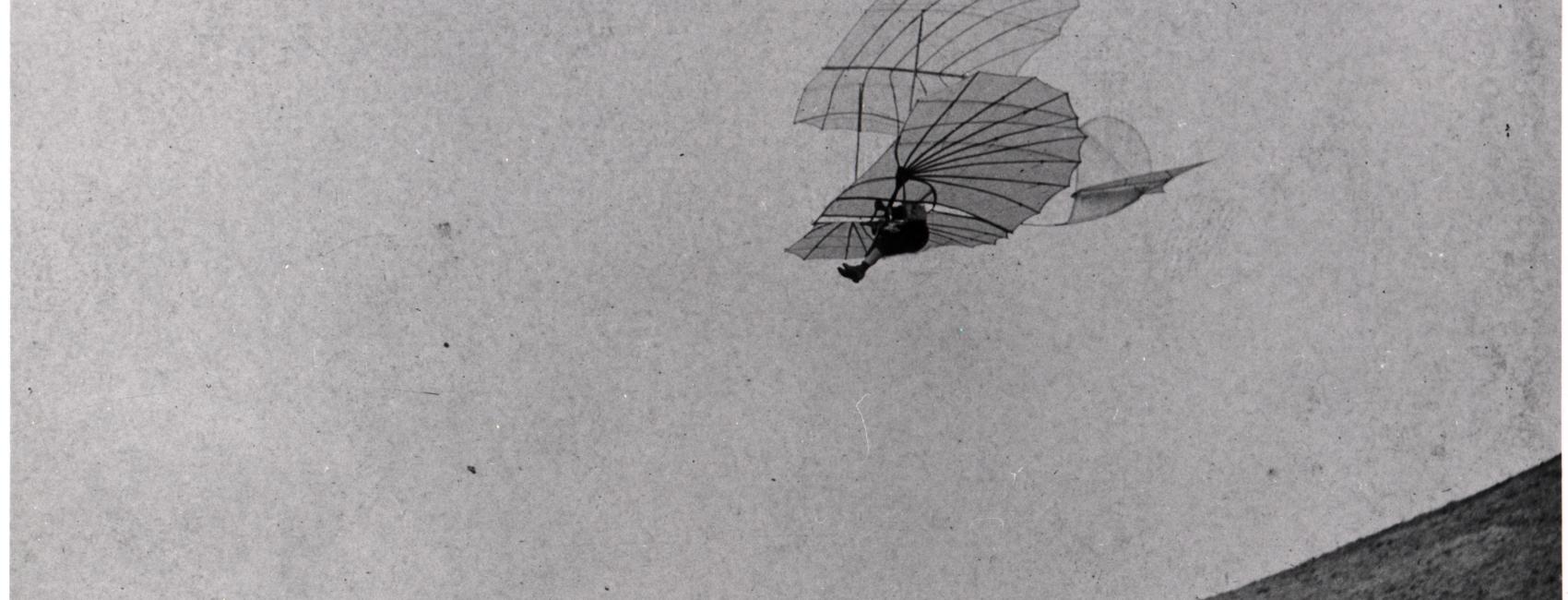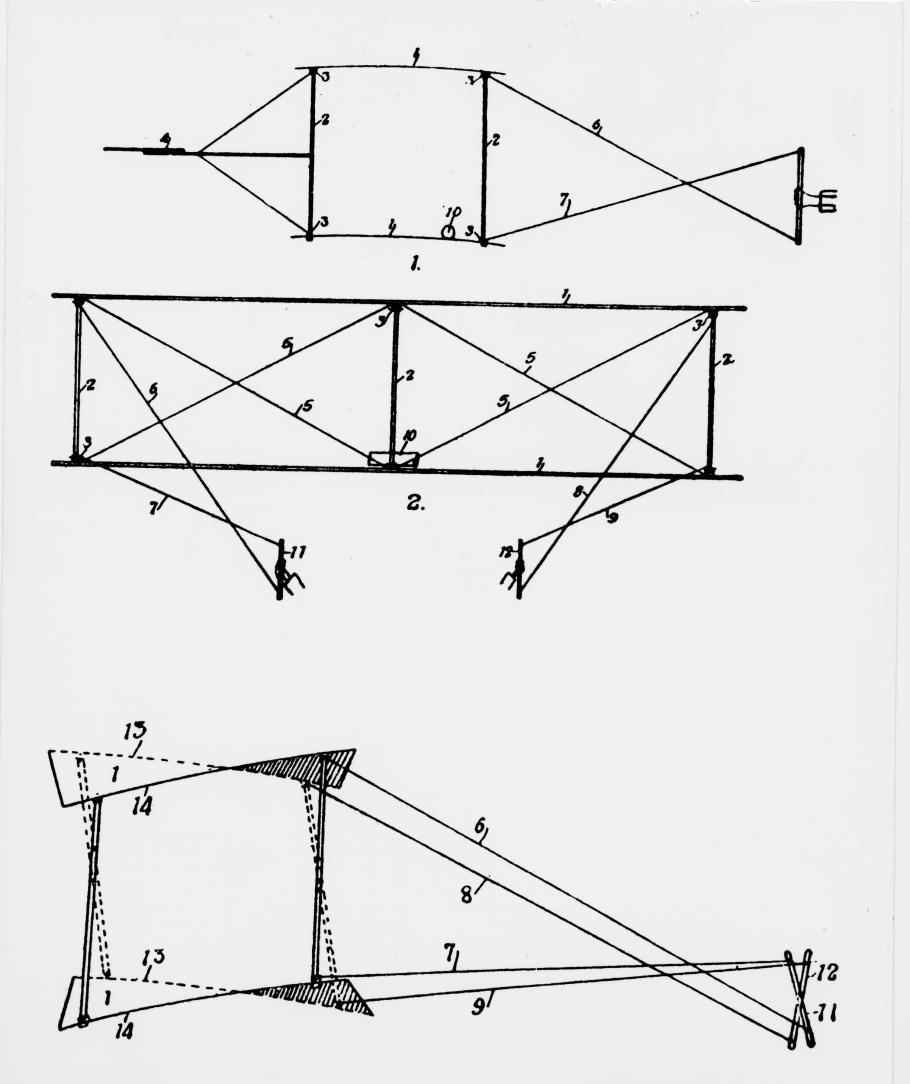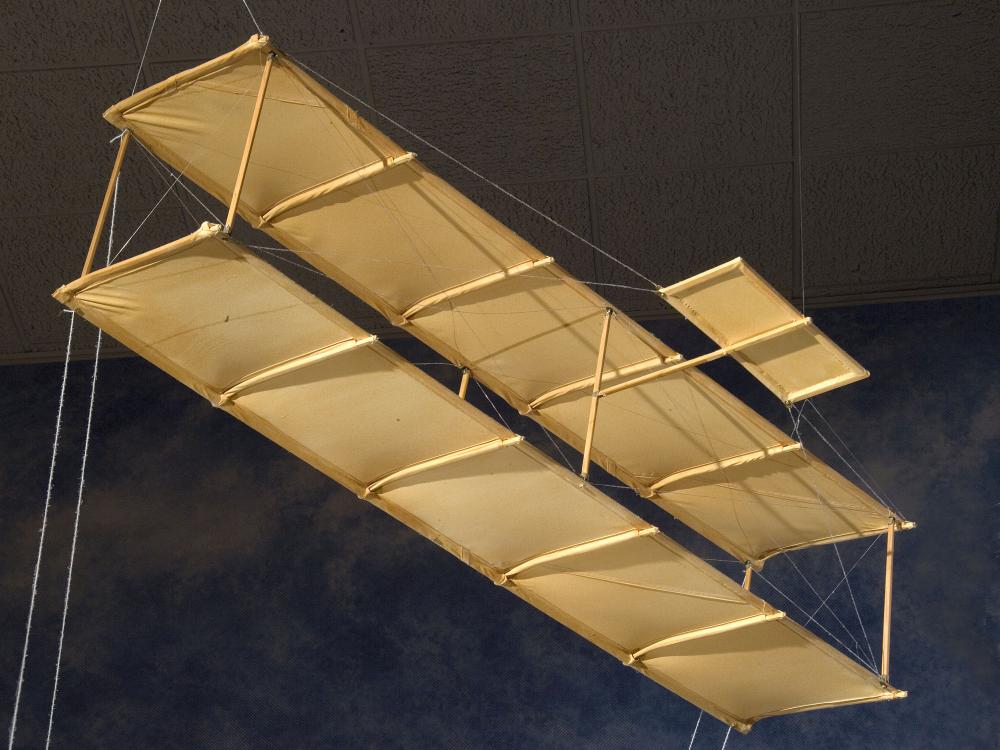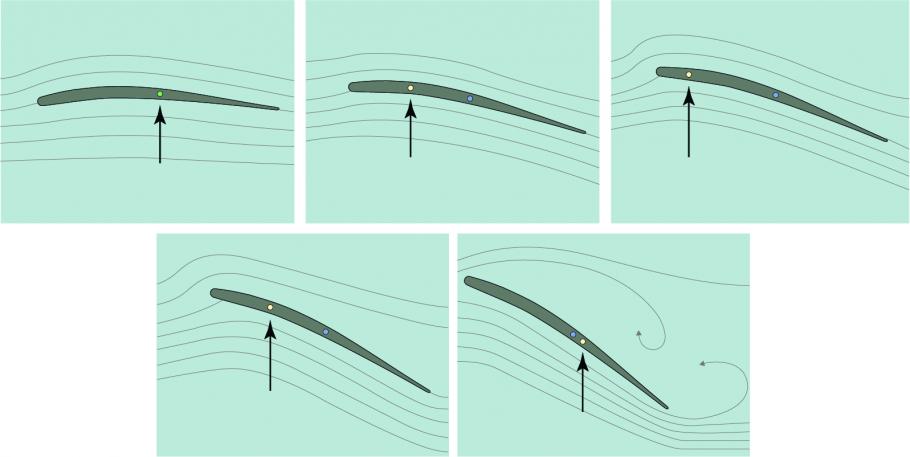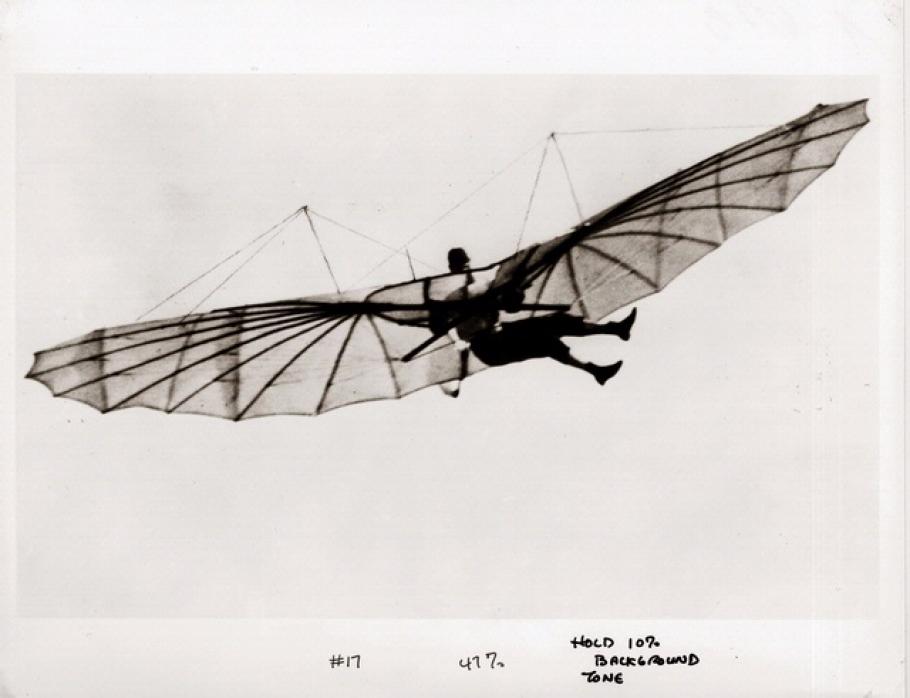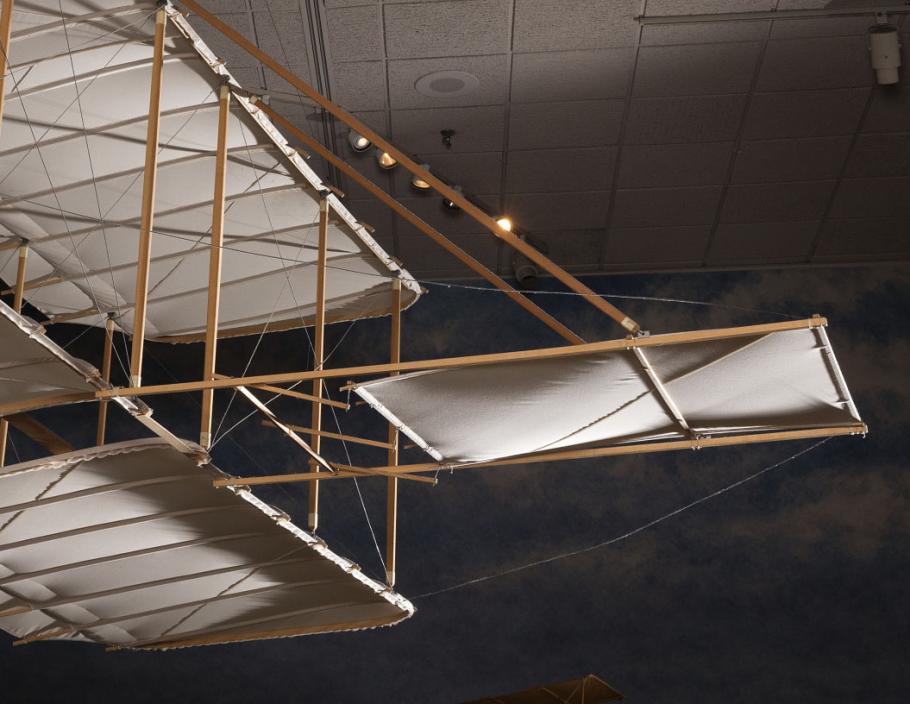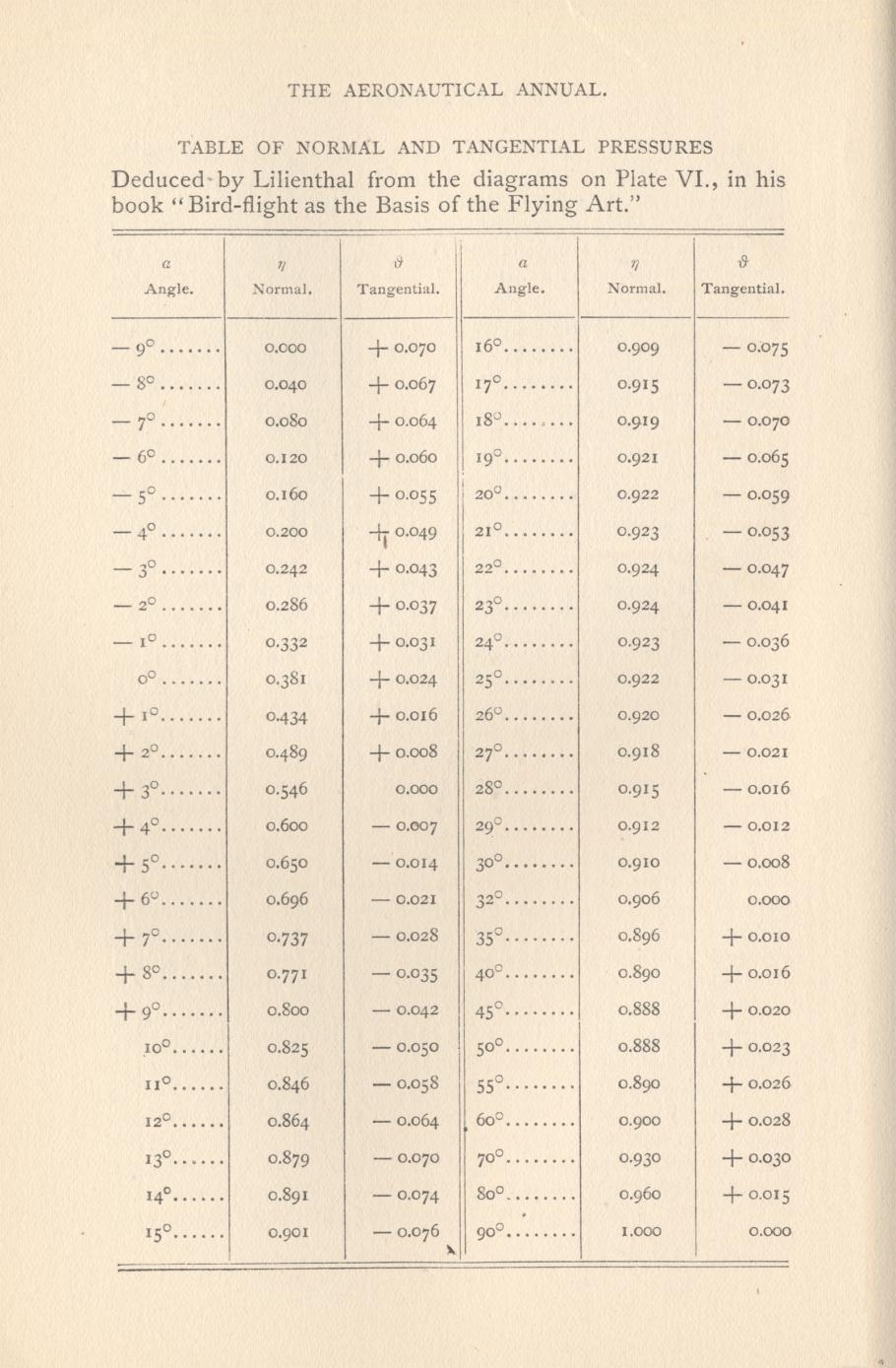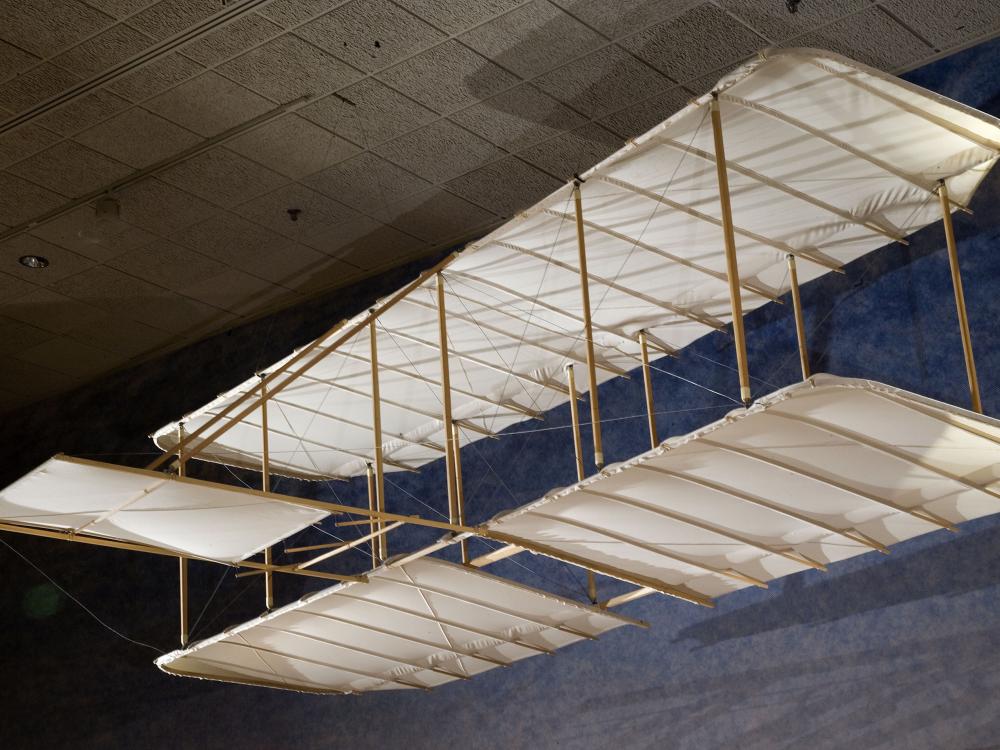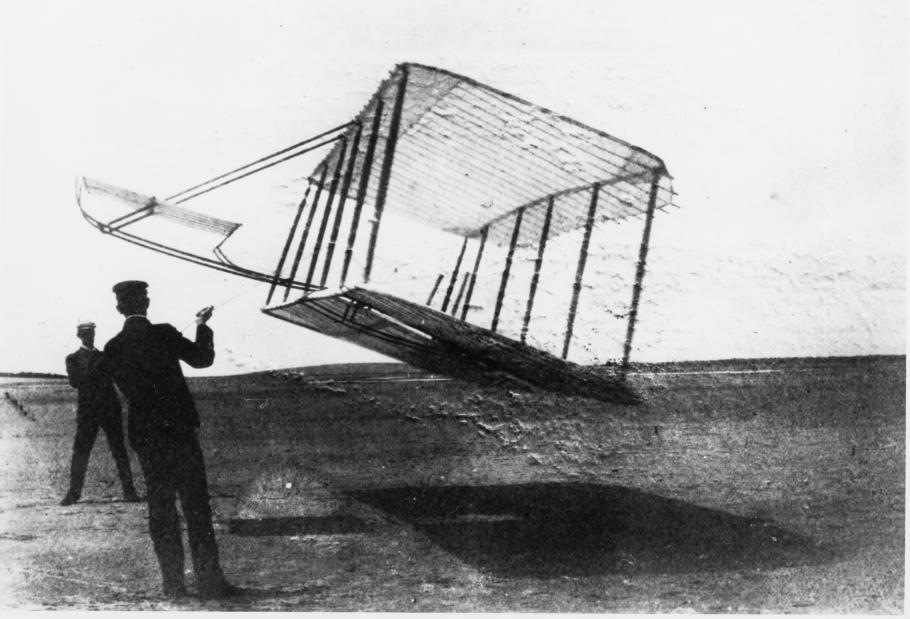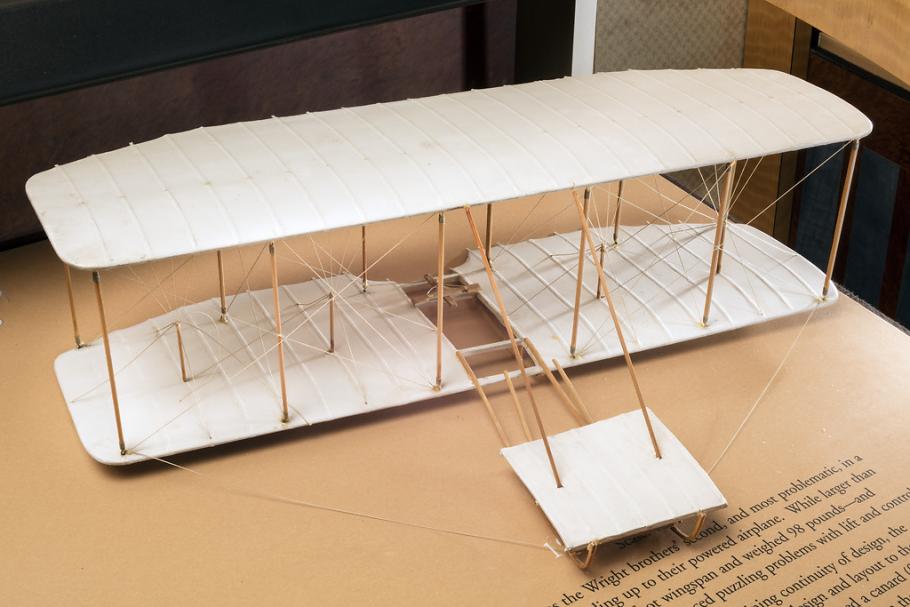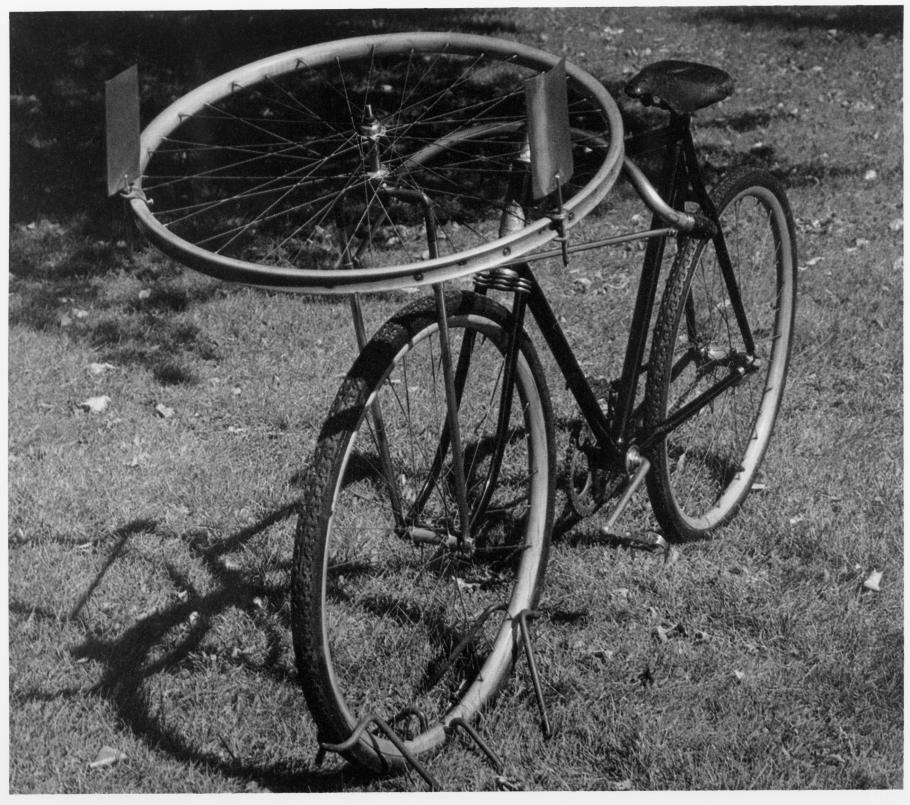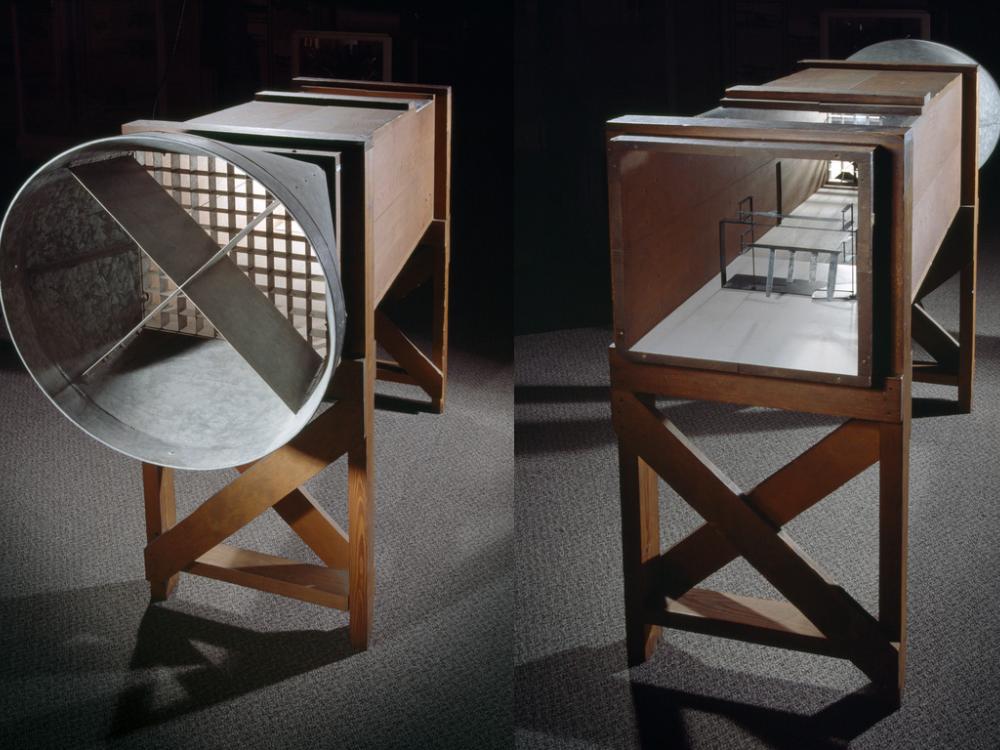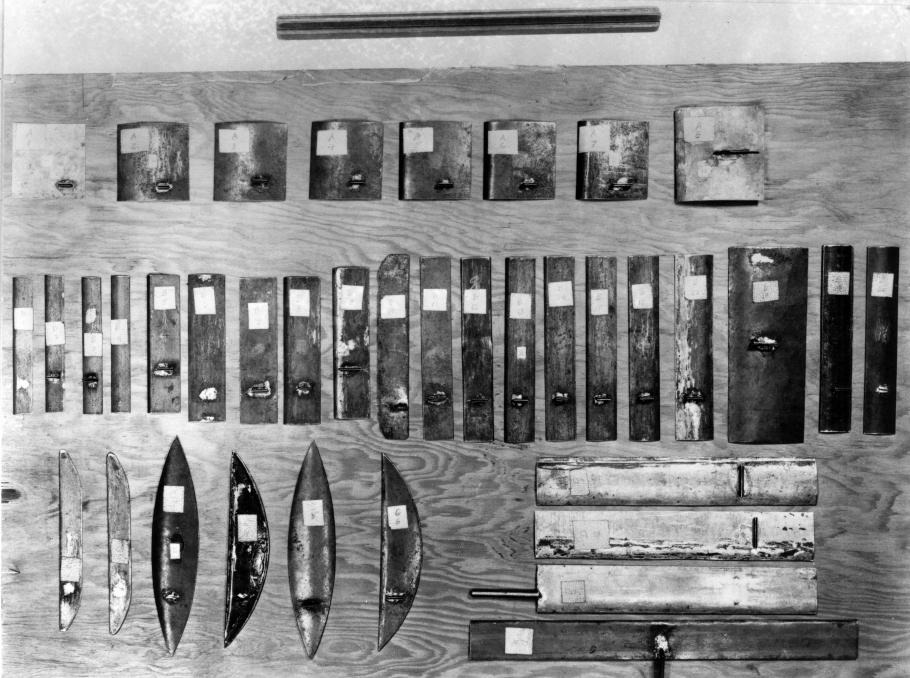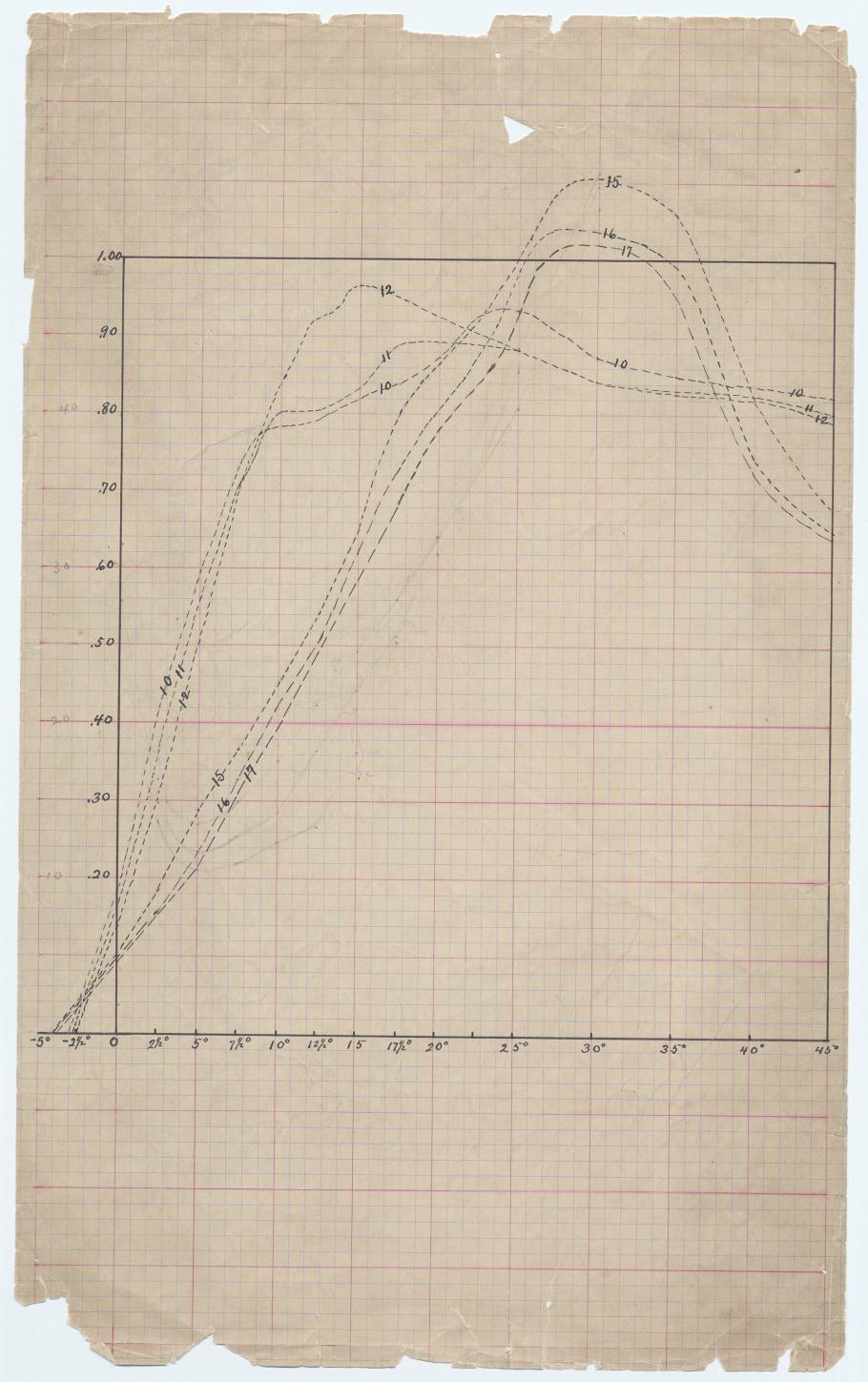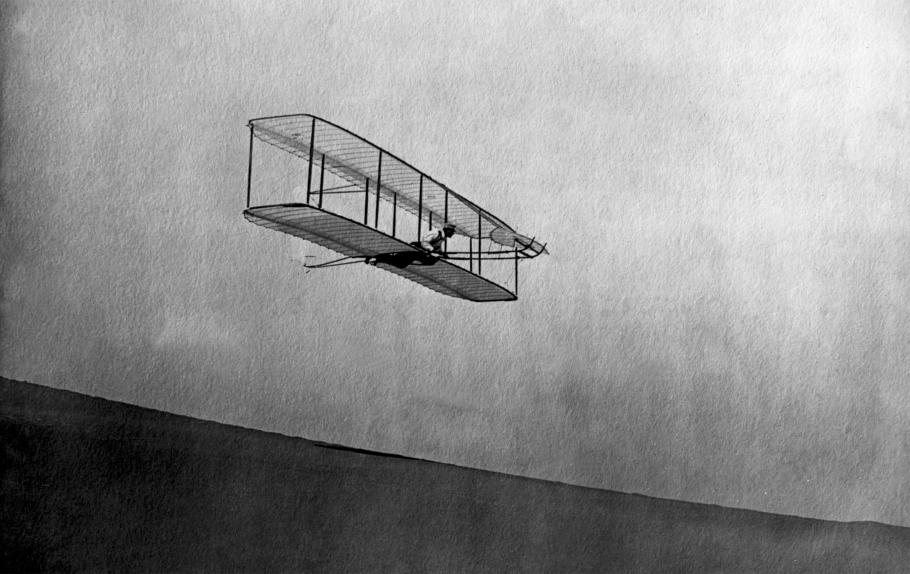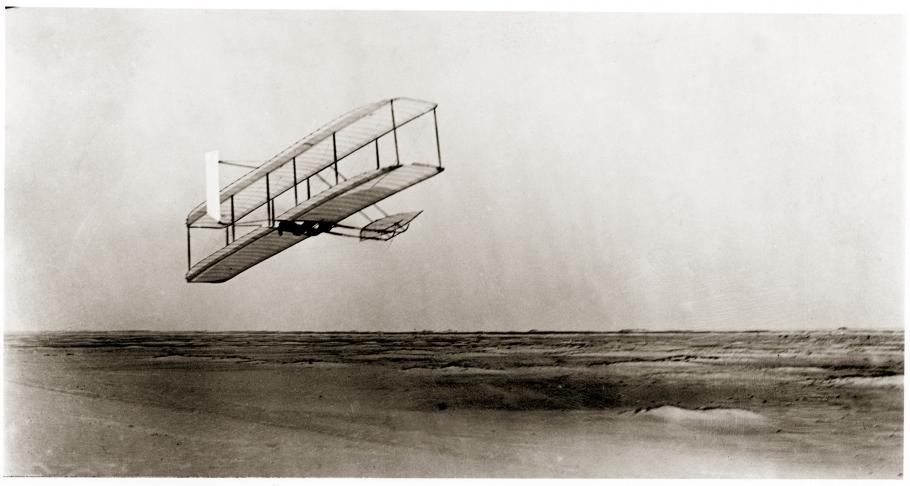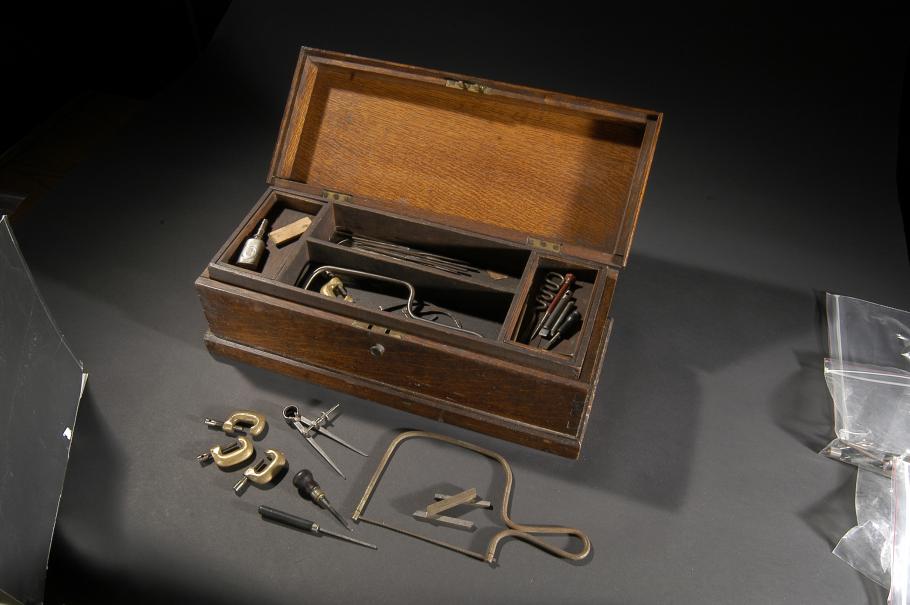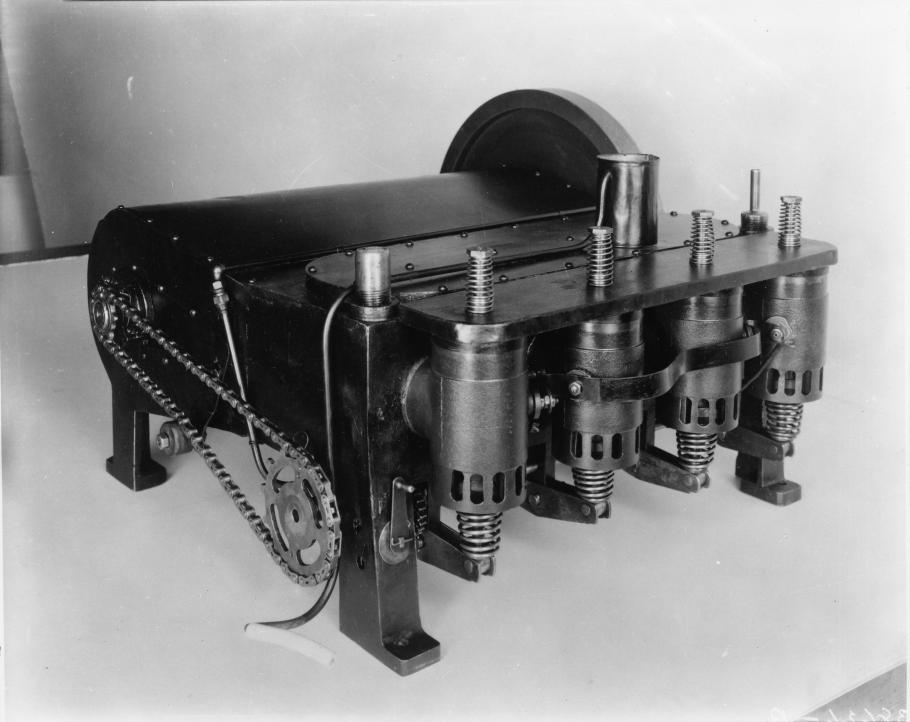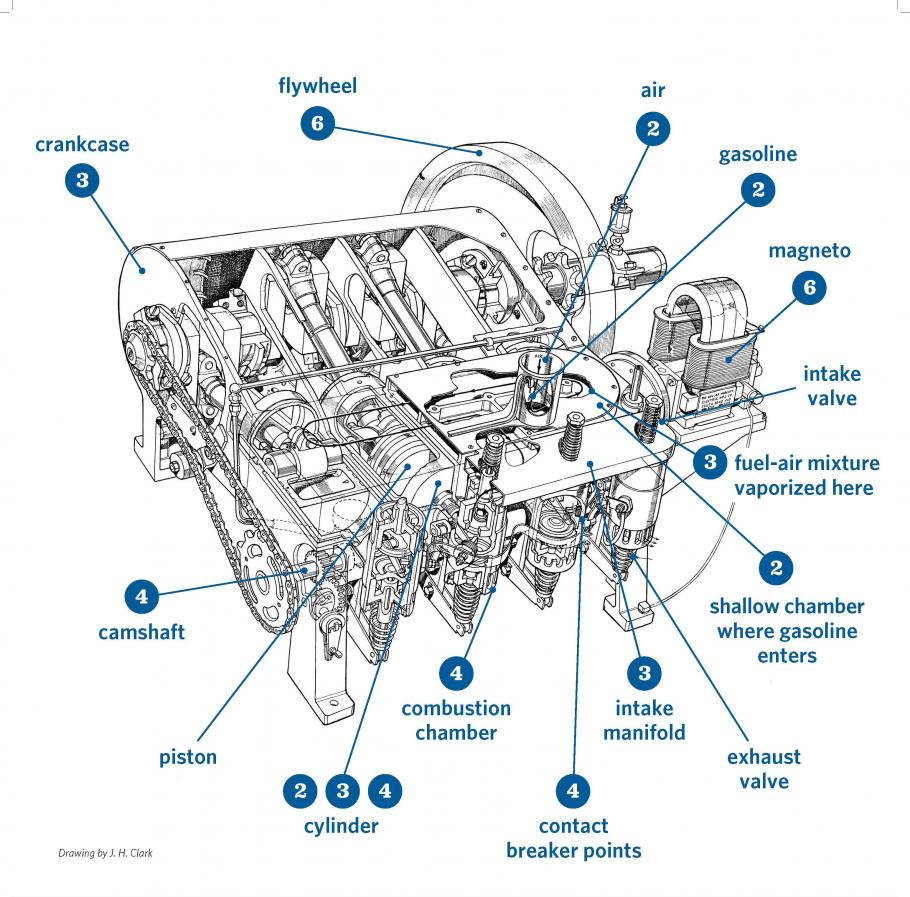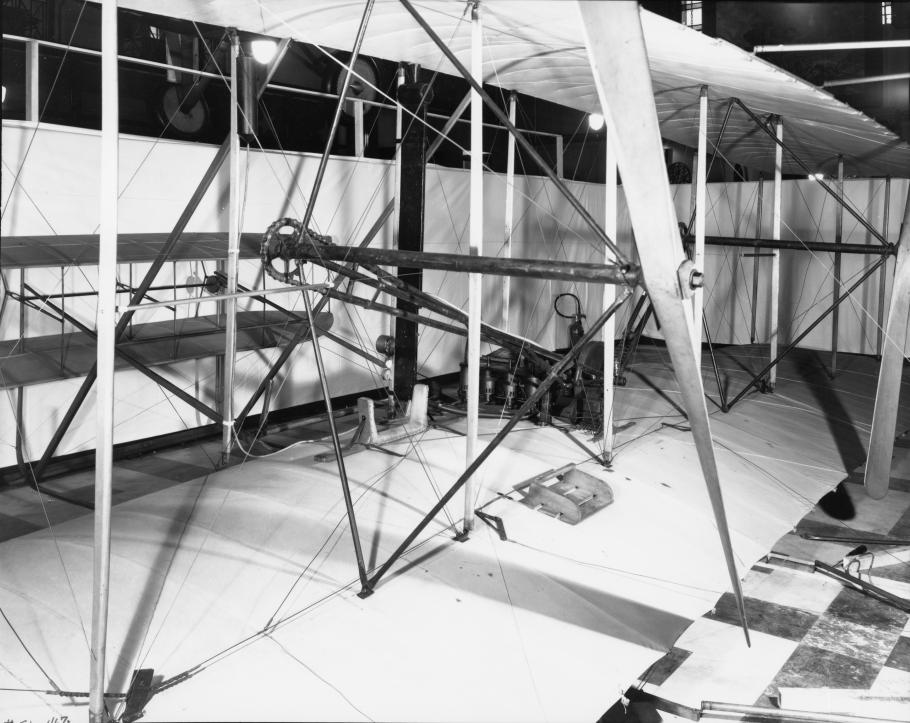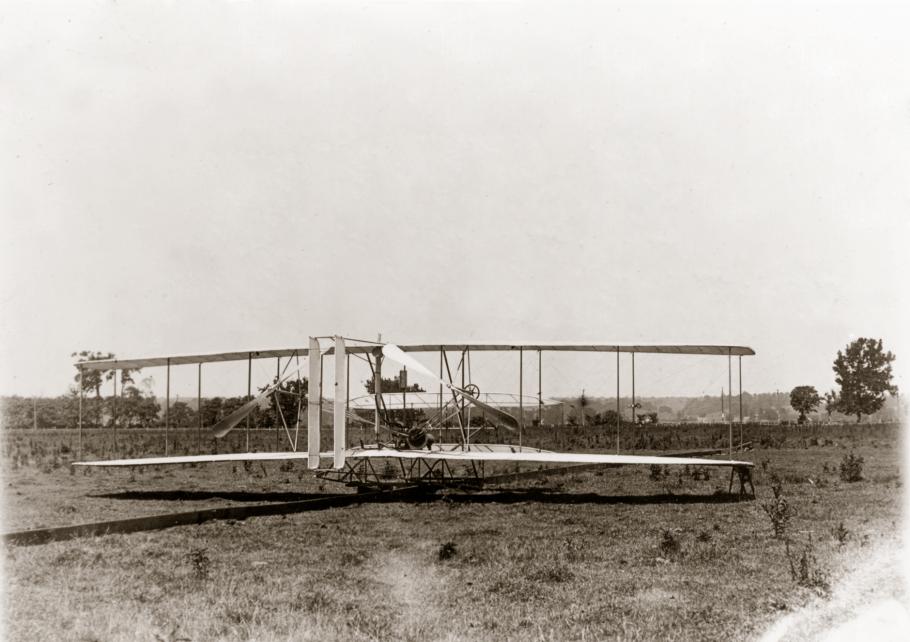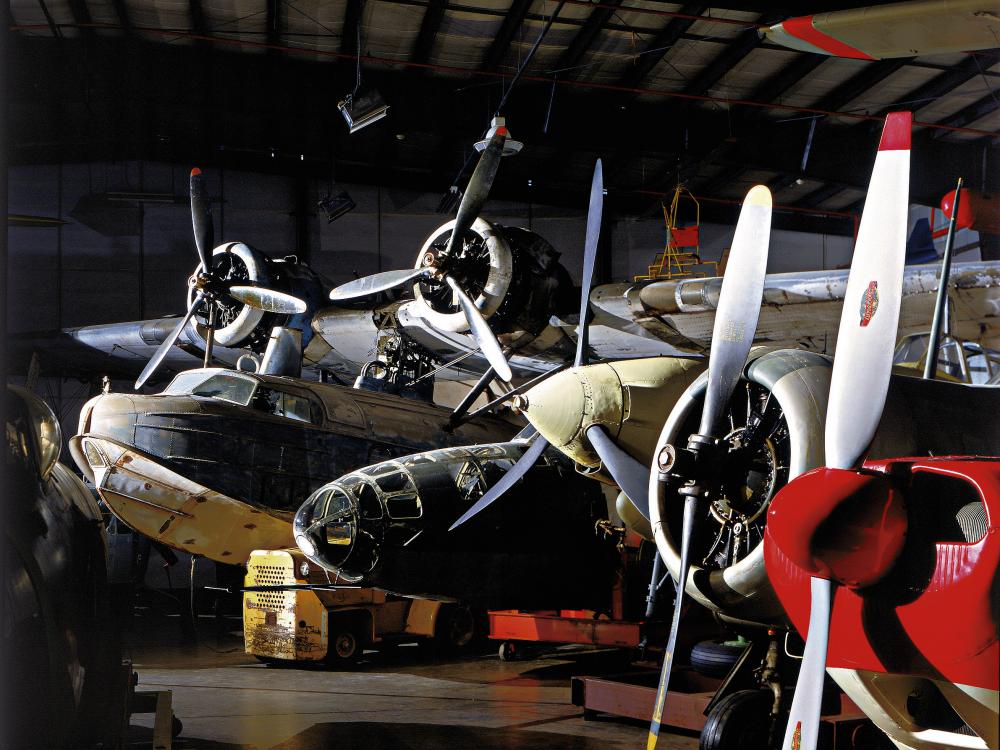The 1903 Wright Flyer made four flights at Kitty Hawk, North Carolina, on December 17, 1903, the best covering 852 feet (284 meters) in 59 seconds. It was the first heavier-than-air, powered aircraft to make a sustained, controlled flight with a pilot aboard.
The Wrights used their proven canard biplane configuration, which was rooted in their initial 1899 kite design. Key to the Flyer’s success was its three-axis control system, which featured wing-warping for lateral balance, a moveable rudder, and an elevator for pitch control.
The right wing was four inches (10 centimeters) longer than the left to compensate for the engine being heavier than the pilot and mounted to his right. The wings were rigged with a slight droop to reduce the effects of crosswinds.
Learn More About the 1903 Flyer

